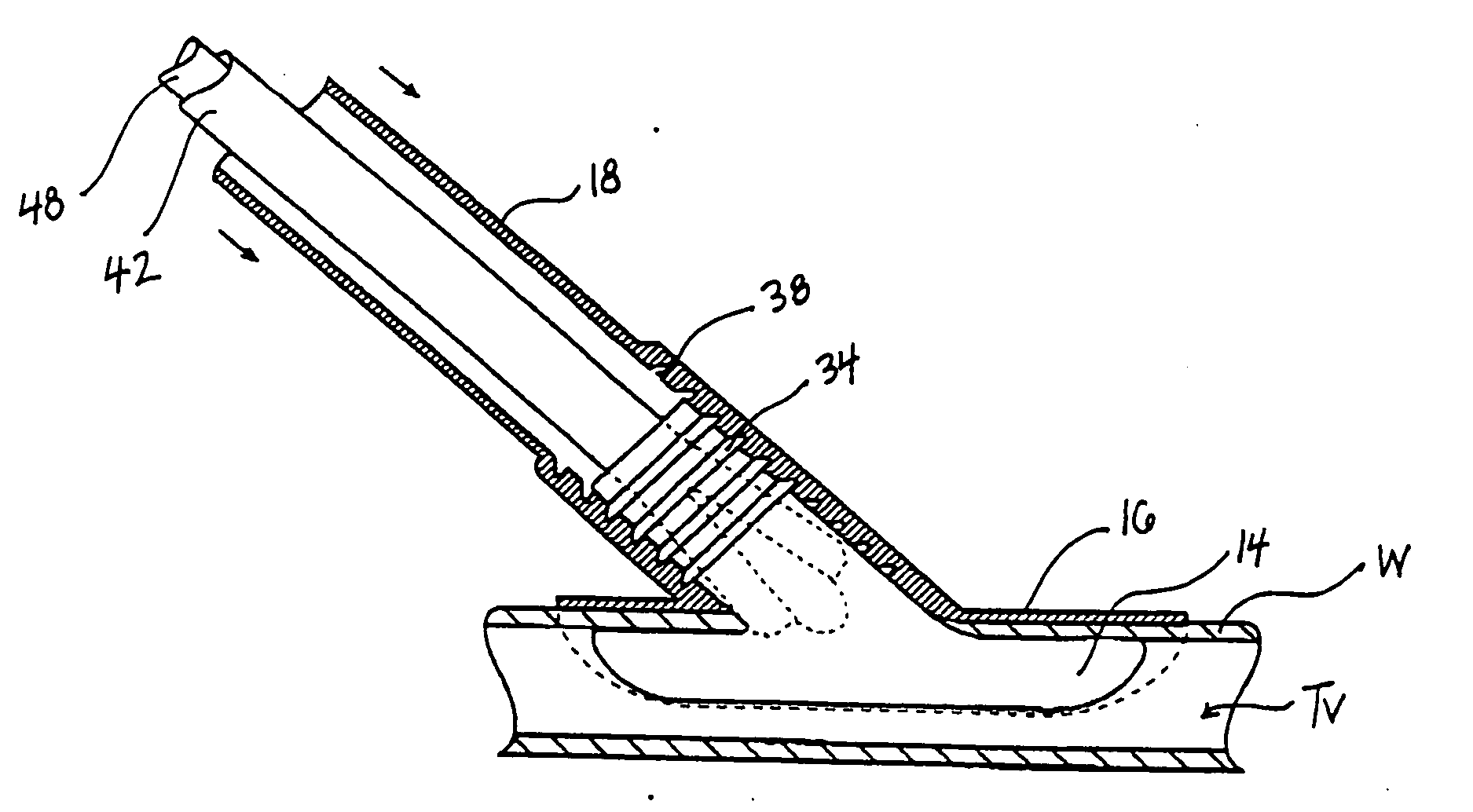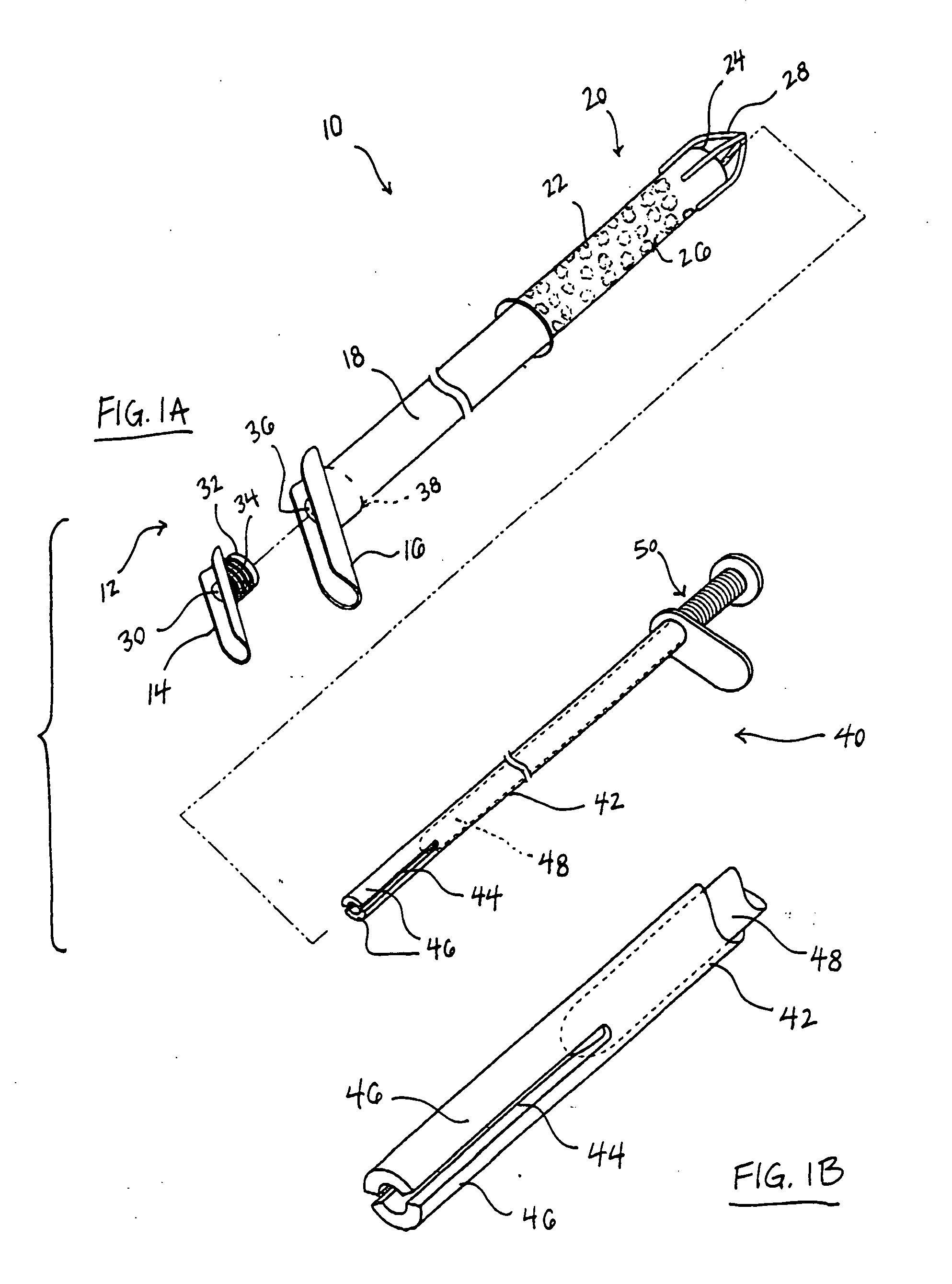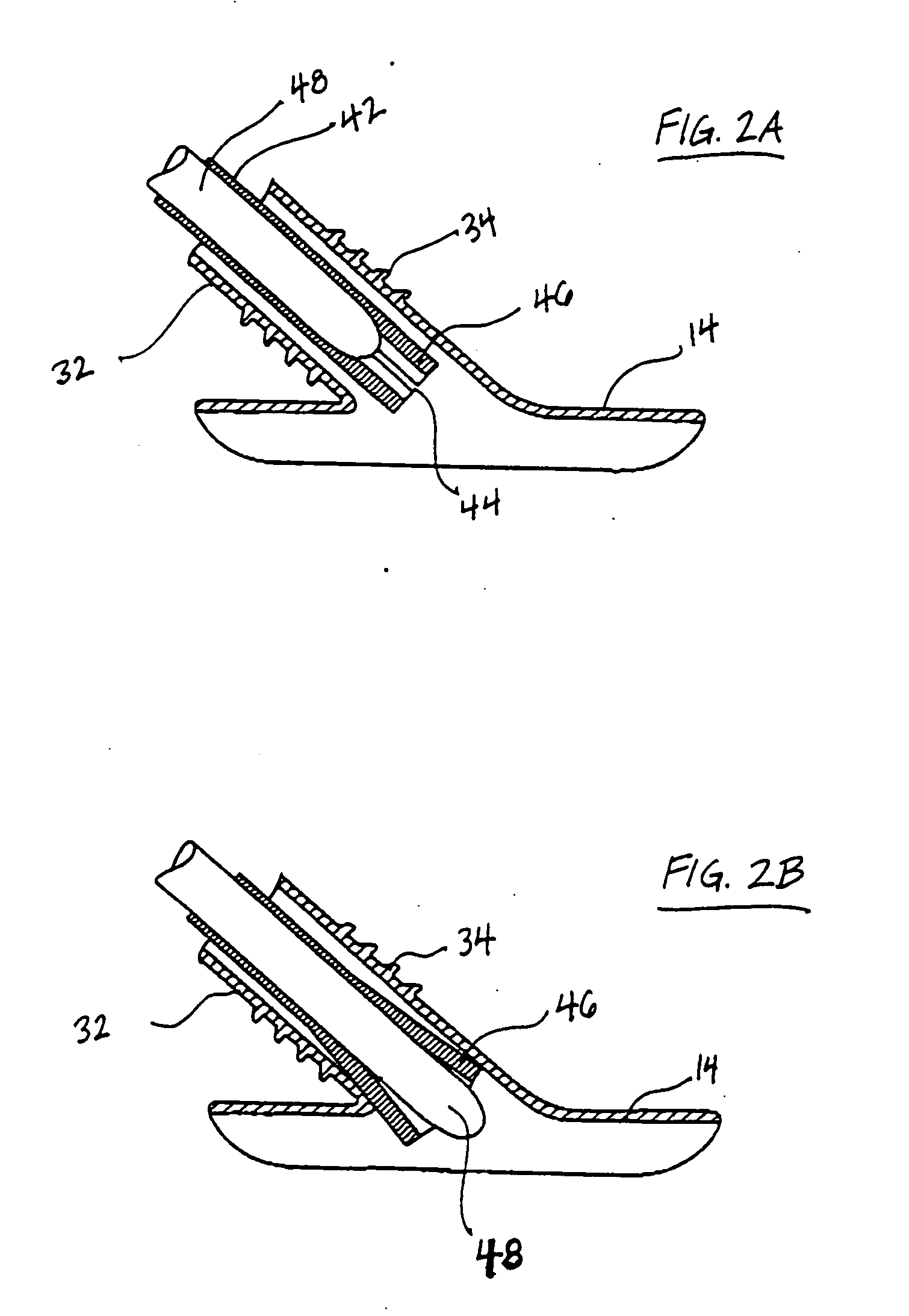Methods and devices for placing a conduit in fluid communication with a target vessel and a source of blood
a technology of target vessels and conduits, which is applied in the direction of prosthesis, surgical staples, therapy, etc., can solve the problems of increasing the risk of stroke, affecting the survival rate of patients, and affecting the safety of patients, so as to reduce stroke risk and overall patient morbidity, and the length is shorter
- Summary
- Abstract
- Description
- Claims
- Application Information
AI Technical Summary
Benefits of technology
Problems solved by technology
Method used
Image
Examples
Embodiment Construction
[0062] The present invention relates to methods and devices for securing a conduit to a target vessel, as well as methods and devices for placing the conduit in fluid communication with a source of blood. Various conduit configurations, anastomotic couplings for securing the conduit to the target vessel or the blood source, and methods for establishing one ore more flow paths between the blood source and the target vessel are disclosed as well.
[0063] In a preferred embodiment, the conduit is coupled to a source of blood, for example, a heart chamber containing oxygenated blood, and a target vessel, for example, a coronary vessel (e.g., artery or vein). It will be recognized, however, that the invention may be used to form a blood flow path between any other luminal structures, some examples of which are set forth below. As used herein, luminal structure means any anatomical structure, natural or synthetic, that is hollow and defines a lumen, for example, a blood vessel or tubular o...
PUM
 Login to View More
Login to View More Abstract
Description
Claims
Application Information
 Login to View More
Login to View More - R&D
- Intellectual Property
- Life Sciences
- Materials
- Tech Scout
- Unparalleled Data Quality
- Higher Quality Content
- 60% Fewer Hallucinations
Browse by: Latest US Patents, China's latest patents, Technical Efficacy Thesaurus, Application Domain, Technology Topic, Popular Technical Reports.
© 2025 PatSnap. All rights reserved.Legal|Privacy policy|Modern Slavery Act Transparency Statement|Sitemap|About US| Contact US: help@patsnap.com



